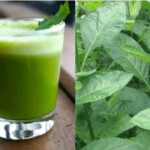
Estella GodwinHealth and Safety , COVID-19October 1, 2020
What has changed about hand washing in the wake of the COVID-19 pandemic? For one, people are more conscious about washing their hands and for another, the frequency at which it is done has increased.
Why is it important that we wash our hands? It is more than important, in our current time and day, it is vital that we engage in this practice as often as possible because a whole lot of ailments can be avoided if handwashing is carried out often and in the correct manner.
Handwashing is a tested and proven technique for keeping germs away. Germs are microscopic organisms that can cause infection. The four main types of germs are Viruses, Bacteria, Protozoa and Fungi.
As we carry out our various activities such as walking, shaking hands, touching surfaces of vehicles and support beams amongst many others, it is impossible to avoid transferring germs from these surfaces to their hands and then consequently to their mouths, eyes, nose and other parts of their bodies or sometimes to other people’s bodies.
This is the endless loop of how germs are spread. Once these germs find a suitable opportunity, they go straight to work by causing ailments such as gastrointestinal infections such as salmonella and respiratory infections such as influenza.
It is not enough to apply soap and water on your hand. Doing it the right way is what makes the difference. What then is the correct way to wash your hands?

This question can be answered by first understanding the right substances to use. They include;
This is basically water that comes directly from a tap or water that is flowing. In essence, the water is not stagnated. When you use a bowl to wash your hands, you get rid of the germs alright, but only for a few seconds because they find their way back to those hands. By using running water, the germs are washed away as the water flows.
Only 19% of people across the world wash their hands with soap after defecating. (Freeman M, Stocks M, Cumming O, Jeandron A, Higgins J, Wolf J, et al., 2014). Washing your hands without soap usually defeats the aim of washing your hands in the first place. Soap is the substance that helps to rid the hands of germs. Regular soaps are okay for handwashing. Liquid soaps are the best, especially in the work place where it is to be used by various people.
This is used for drying the hands after washing. The towel has to be clean so that you do not end up picking up germs from its fabric.

16-23% reduction in risk of acute respiratory infection.
50% reduction in pneumonia.
Substantial reduction in neonatal infections.
Up to 48% reduction in risk of endemic diarrhoea. (Gautam, 2017)
There is no specific number of times to wash your hands. The goal is to remove these germs from your person as often as possible.
Washing your hands frequently keeps various ailments away.
Stay healthy today.
Wash your hands the right way.
COVID-19January 6, 2021
COVID-19August 31, 2020
NutritionFebruary 5, 2025
MedicationFebruary 5, 2025








